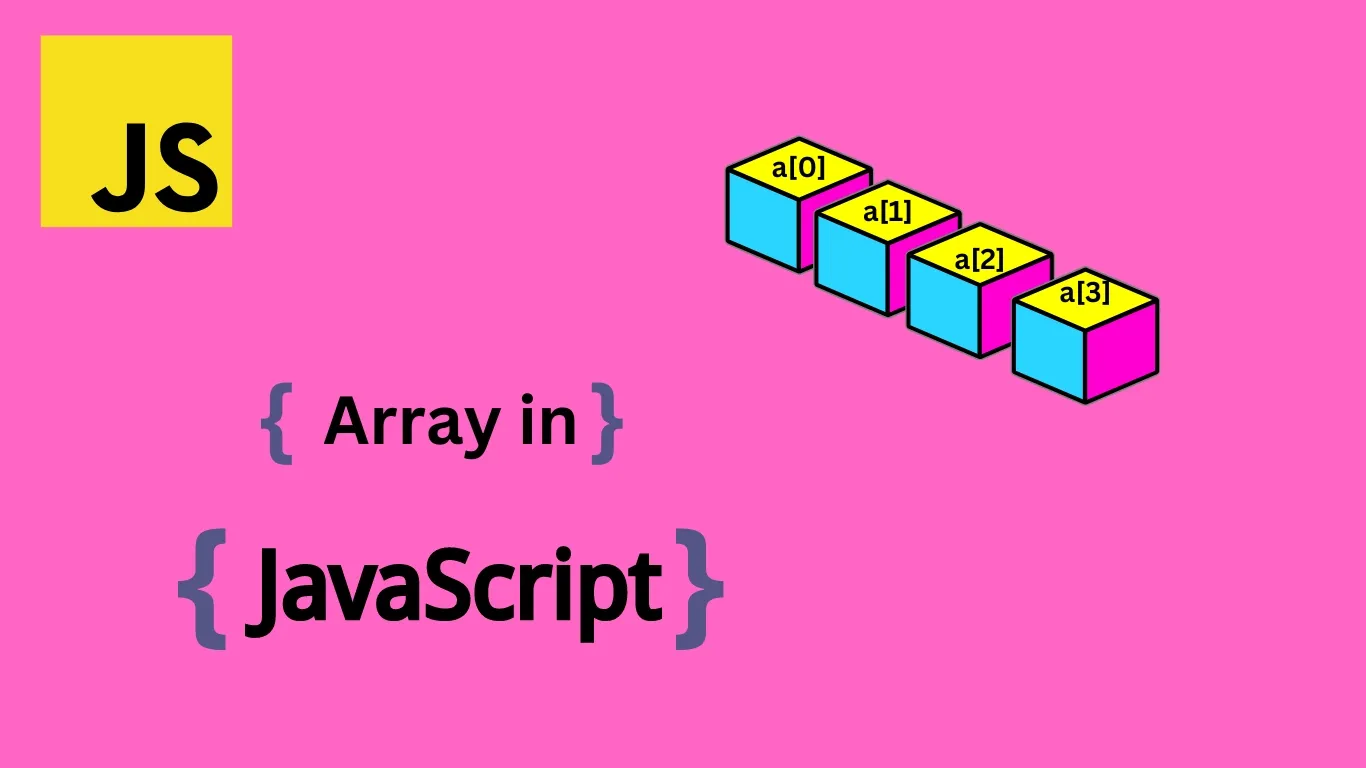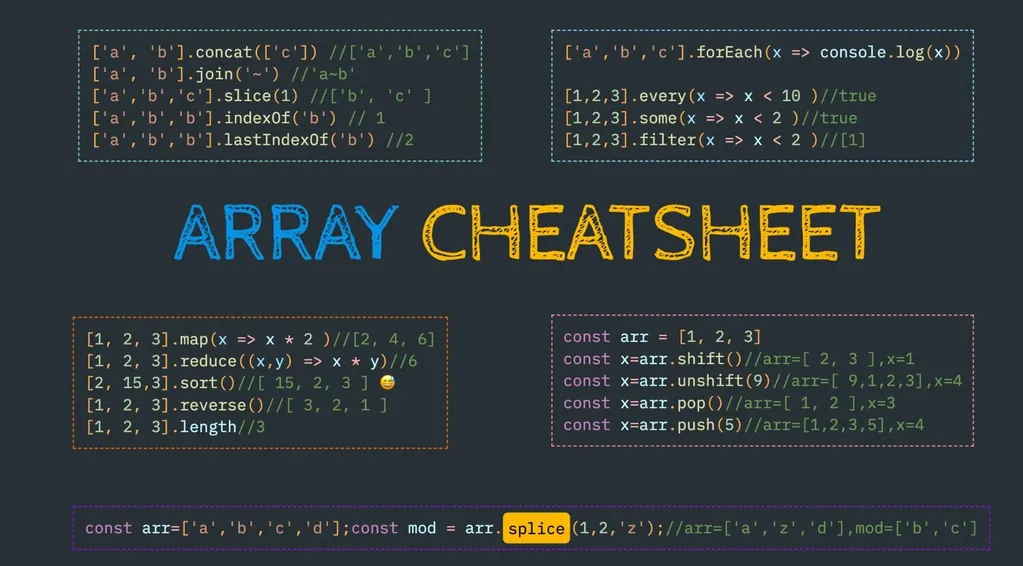Arrays are one of the most important and commonly used data structures in JavaScript. Mastering arrays not only helps you store and manage data efficiently, but also opens the door to solving more complex problems. This article will take you from the basics to advanced methods, helping you become a true "array master" in JavaScript.

What is an Array? How are Arrays in JavaScript Different?
Basically, an array is an ordered collection of values. These values are called elements of the array. A special feature is that elements in a JavaScript array can have different data types (e.g., numbers, strings, objects, even other arrays), making arrays in JavaScript extremely flexible.
- Difference from other languages: In many other programming languages, arrays usually have a fixed size and contain only one data type. JavaScript arrays, however, can change size and hold multiple data types. This is a big advantage, but it also requires you to be more careful when working with them.
How to Initialize and Access Arrays
Initialization
There are two common ways to create an array:
- Using square brackets
[](the recommended way):
const fruits = ['Apple', 'Orange', 'Mango']
const numbers = [1, 2, 3, 4, 5]
- Using the
new Array()constructor:
const newArray = new Array('Apple', 'Orange', 'Mango')
const anotherArray = new Array(5) // Creates an empty array with 5 elements (undefined)
Note: Be careful when using new Array() with a single numeric argument, as it will create an empty array of that length, not an array containing that number.
Accessing Elements
You can access array elements using indices. In JavaScript, indices start at 0.
const fruits = ['Apple', 'Orange', 'Mango']
console.log(fruits[0]) // Output: 'Apple'
console.log(fruits[1]) // Output: 'Orange'
fruits[2] = 'Pear' // Change the value of the third element
console.log(fruits) // Output: ['Apple', 'Orange', 'Pear']
To get the total number of elements in an array, use the length property:
console.log(fruits.length) // Output: 3
Powerful and Popular Array Methods 💪
This is the core and most important part. Mastering these methods will make your code much cleaner, more efficient, and easier to read.

Adding and Removing Elements
push(): Add one or more elements to the end of the array.pop(): Remove the last element from the array and return it.unshift(): Add one or more elements to the beginning of the array.shift(): Remove the first element from the array and return it.
const array = ['a', 'b']
array.push('c') // array -> ['a', 'b', 'c']
const lastItem = array.pop() // lastItem -> 'c', array -> ['a', 'b']
array.unshift('z') // array -> ['z', 'a', 'b']
const firstItem = array.shift() // firstItem -> 'z', array -> ['a', 'b']
Looping Through Elements
- Traditional
forloop: Useful when you need to access indices. for...of: Loops through array values, with cleaner syntax.forEach(): Loops through each element, convenient and modern.
const numbers = [10, 20, 30]
numbers.forEach((number, index) => {
console.log(`Element at index ${index}: ${number}`)
})
// Output:
// Element at index 0: 10
// Element at index 1: 20
// Element at index 2: 30
Transforming and Querying Arrays
These are the "levers" that help you process array data powerfully.
map(): Creates a new array by applying a function to each element of the original array.
const numbers = [1, 2, 3]
const doubled = numbers.map((x) => x * 2) // doubled -> [2, 4, 6]
filter(): Creates a new array containing elements that satisfy a condition.
const numbers = [1, 2, 3, 4, 5]
const evens = numbers.filter((x) => x % 2 === 0) // evens -> [2, 4]
reduce(): "Reduces" the array to a single value (can be a number, string, or object).
const numbers = [1, 2, 3, 4]
const sum = numbers.reduce(
(accumulator, currentValue) => accumulator + currentValue,
0,
) // sum -> 10
find(): Returns the value of the first element that satisfies a condition.findIndex(): Returns the index of the first element that satisfies a condition.sort(): Sorts the elements of the array. Be careful with how numbers are sorted.slice(): Creates a new array from a portion of the current array.splice(): Changes the contents of an array by removing, adding, or replacing elements.
const students = ['Ann', 'Bill', 'Helen']
const findStudent = students.find((s) => s === 'Bill') // findStudent -> 'Bill'
students.splice(1, 1, 'Lana') // Remove 'Bill' (1 element at index 1), add 'Lana'
// students -> ['Ann', 'Lana', 'Helen']
Multi-dimensional Arrays
Although JavaScript does not have official multi-dimensional arrays, you can create an array of arrays to simulate them.
const matrix = [
[1, 2, 3],
[4, 5, 6],
[7, 8, 9],
]
console.log(matrix[1][2]) // Output: 6
Conclusion: Arrays are Powerful and Flexible
Arrays are a powerful and flexible tool in JavaScript. By mastering core methods like map, filter, reduce, and other basic operations, you'll not only solve problems more easily but also write cleaner and more maintainable code.
Practice regularly so that working with arrays becomes second nature!
![[JS Basics] Objects in JavaScript: Concepts & Effective Usage](/images/blog/objects-in-javascript.webp)
![[JS Basics] What is JavaScript? Why is it Important for Developers?](/images/blog/what-is-javascript.webp)
![[JS Basics] Conditional Statements in JavaScript: Examples & Effective Usage](/images/blog/conditional-statements-in-javascript.webp)
![[JS Basics] Loops in JavaScript: A Detailed Guide for Beginners](/images/blog/loops-in-javascript.webp)